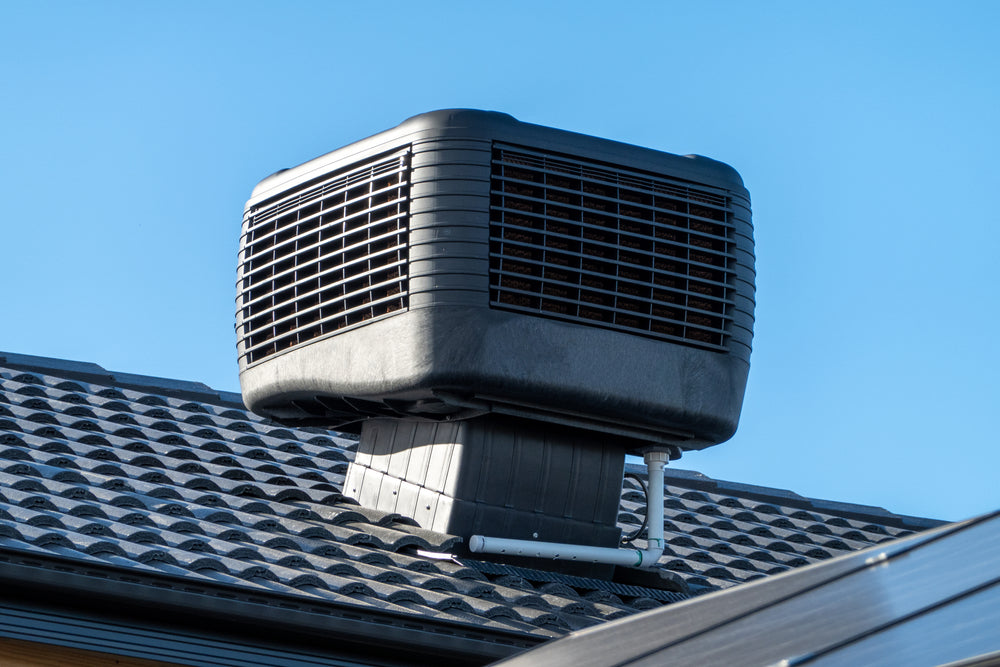
Why an Evaporative Cooling System Should Be a Priority in Your New Property Build
Australia is famous for its unruly climate, and given the periods of intense heat, when planning a new house build, choosing the right cooling system will ensure your comfort. Given that you might be using it for days—weeks, even—cooling systems will also affect your energy consumption and environmental footprint.
One system that stands out is evaporative cooling.
In this article, our experts at BCB Sales & Service will explore why an evaporative cooling system should be a priority in your new house build. We'll dive into how evaporative cooling works, its benefits, and practical considerations when it comes time for installation.
What is Evaporative Cooling?
Evaporative cooling is a process that cools air through the evaporation of water. Unlike traditional air conditioning, which uses refrigerants and compressors, evaporative coolers use water to absorb heat and produce cool air. The best evaporative coolers utilise a more natural process that is energy-efficient and environmentally friendly, making it an excellent option for home cooling.
How Does Evaporative Cooling Work?
Evaporative cooling works on the principle of water evaporation. When water evaporates, it absorbs heat from the surroundings, which cools the air. Evaporative coolers consist of a fan, a water pump, and cooling pads. The fan draws in warm air from outside, passing through the cooling pads soaked with water. As the air moves through the pads, the water evaporates and cools the air. The cooled air is then circulated throughout the space, providing a refreshing and comfortable environment.
Simply put, evaporative coolers:
- Warm air is drawn into the unit
- The air passes over water-saturated pads
- Water evaporates, cooling the air
- The cooled air is then circulated throughout the space
Are Evaporative Coolers Good for Your Property?
Energy Efficiency and Lower Cost of Evaporative Cooling
Evaporative cooling systems are known for their energy efficiency. They consume less electricity than traditional air conditioners, resulting in significant cost savings. Additionally, the cost of installing an evaporative cooling system is typically lower than that of a central air conditioning unit.
Environmental Benefits of Evaporative Cooling
Evaporative coolers have a lower environmental impact, given they do not use harmful refrigerants. Instead, they rely on the natural cooling process, reducing the carbon footprint associated with cooling. It makes them a sustainable choice for eco-conscious homeowners.
Moreover, evaporative coolers use significantly less energy, which translates to lower greenhouse gas emissions.
Supportive Features & Functions of Evaporative Cooling
Some of the best evaporative coolers on the market offer features like programmable timers, multiple speed settings, and advanced filtration systems. These features enhance the cooling system's overall efficiency and convenience, making it a preferred choice for many homeowners.
The Best Evaporative Coolers Offer Peak Performance in Various Settings
Evaporative coolers perform well in both residential and industrial settings.
For instance, large warehouses and factories benefit from the efficient cooling these systems provide. The constant flow of fresh, cooled air helps maintain a comfortable working environment, improving productivity and reducing heat-related issues. In a case study involving an Australian manufacturing plant, installing evaporative coolers led to a 30% increase in worker productivity during the summer months.
Evaporative coolers are perfect for open-plan living areas and outdoor spaces like patios and verandas in residential builds. They offer a cost-effective cooling solution that complements modern, energy-efficient home designs. Homeowners in regions like Perth and Adelaide, where the climate is hot and dry, have reported high satisfaction levels with evaporative cooling systems, citing lower energy bills and improved indoor air quality.
Practical Considerations for Installation
When planning to install an evaporative cooling system, consider the following:
- Climate Suitability: Best suited for dry, hot climates
- Space Requirements: Ensure adequate ventilation
- Maintenance Needs: Regular cleaning and pad replacement
Evaporative coolers work best in areas with low humidity. In high-humidity regions, their efficiency decreases as the air cannot absorb much moisture. It is also essential to ensure that the space where the cooler is installed has proper ventilation to allow for continuous air circulation. Additionally, maintenance involves regularly cleaning the cooling pads and replacing them as needed to ensure optimal performance.
When considering an evaporative cooling system for your new house build, it is crucial to consult with HVAC professionals who can provide expert advice and assess your specific cooling requirements. Evaluating different models and their features will help you choose the best evaporative cooler for your needs. Additionally, following proper maintenance routines and ensuring optimal installation will maximise the system's efficiency and longevity.
Evaporative Cooling vs. Air Conditioning
Energy Efficiency:
- Evaporative cooling consumes significantly less electricity, reducing energy costs by up to 75%.
- Traditional air conditioning uses more energy due to compressors and refrigerants.
Environmental Impact:
- Evaporative coolers are eco-friendly, using water evaporation without harmful refrigerants.
- Air conditioners rely on refrigerants that can contribute to greenhouse gas emissions.
Operational Costs:
- Lower initial installation and maintenance costs for evaporative coolers.
- Higher installation and ongoing maintenance costs for air conditioning systems.
Performance in Humidity:
- Evaporative coolers work best in dry climates and are less effective in high humidity.
- Air conditioners perform well in all climates, including humid areas.
Air Quality:
- Evaporative coolers introduce fresh air and can improve indoor air quality.
- Air conditioners recirculate indoor air, which can sometimes reduce air quality.
Cooling Method:
- Evaporative cooling uses natural water evaporation to cool air.
- Air conditioning uses chemical refrigerants and a mechanical process to cool air.
Evaporative cooling systems offer numerous benefits, from cost savings to environmental impact. They provide an efficient and sustainable cooling solution for new house builds.
Understanding how evaporative cooling works and considering its advantages can help you make an informed decision about your new home. For expert advice and quality products, contact us at BCB Sales & Service today.